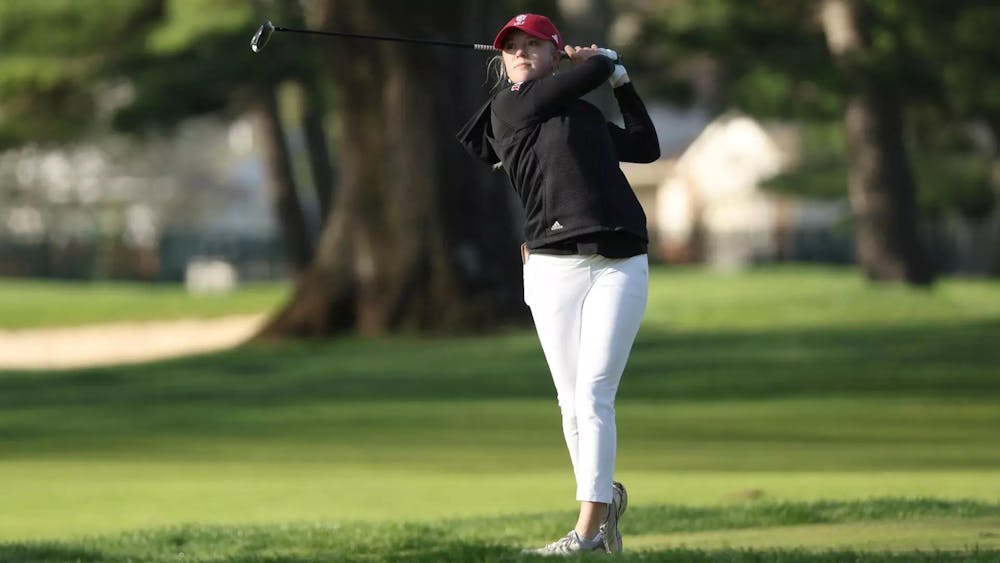When you first walk through the doors of MetroWear on Morton Street, don't be surprised if you feel like you've just stepped out of a teleportation machine. \nThe newly opened store that sells upscale men's clothing and skincare products looks -- and feels -- like something you would find in the streets of New York City or Chicago. \nAnd that is exactly what owners Branden and Nikki Johnson intended.\n"It's good to have the store laid out so when someone walks in the door, before they even look at any of our products, they're impressed," Branden said. "What we're really trying to combine is the feeling that the store gives off with the kind of clothing and kind of products that we sell."\nThis concept, formally called visual merchandising, isn't a tool businesses have recently discovered -- it's been around for a while. But the concept is rapidly gaining popularity in a society driven by consumerism and excess stuff.\nHeather Akou, assistant professor in the apparel merchandising department, said stores have to think of new ways to get people to buy their stuff because most products on the market are fairly unnecessary luxuries.\n"This country has way more retail stores than we need, we have way more clothes and electronics than anyone could ever possibly use," Akou said. "So how are they going to get you to buy more stuff that you really don't need?"\nMetroWear is a model for how visual merchandising can determine the success of a store. Its upscale, expensive clothing would not sell as well if it weren't for the atmosphere, the owners said. \nBut what makes a store feel expensive or individual or manly? Every piece of furniture, every color and every hanging fixture is part of a bigger picture. In MetroWear, framed photos of the New York City skyline are hung to give customers a "big city" feel. The plasma TV offers a sense of sleekness and luxury. And a small seating area in the middle of the store is intended to increase the customer's comfort level. \nThe most important aspect of the store's design, however, is its simplicity. MetroWear is fairly small for a retail store, and doesn't carry a lot of inventory on purpose.\n"Less is more," said David Wade, a Bloomington-based freelance interior designer who designed MetroWear. "When there's only one item hanging, or three items hanging, it gives a perception of quality, of exclusiveness. Even though (Branden) has more in the back, he'll sell one off the shelf and replace it later."\nExclusivity is something the Johnsons want their customers to feel and perceive at MetroWear.\n"If you buy something from Abercrombie & Fitch, you're likely to see it two or three times when you go to class," Branden said. "But if you buy something from us, you'll be lucky if you ever see something like it. I think that adds to the value of buying stuff in here."\nJunior Andrea Preciado, who is more aware of retail stores' use of visual merchandising because she is an apparel merchandising major, visited MetroWear a few months ago and loved the store's simple and sleek design.\n"It was less tense for the visual eye in relation to how they've designed it," Preciado said. "They actually have table layouts. In some stores you'll see the round racks. Those are a lot harder for eyes to catch, and they didn't use that type of thing. They used tables."\nIt's all part of a marketing strategy, which has become increasingly important as successful marketing strategies replace the quality of the products themselves, or even the service. And small stores like MetroWear aren't the only ones embracing this -- one big-name company is all over visual merchandising, and has the numbers to prove it works.\nIn the past five or so years, Target Corp. has employed visual merchandising to boost its overall image. The Minneapolis-based company has hired a number of professional designers, including Isaac Mizrahi and Todd Oldham, to design lines of products exclusively for Target. It has also launched colorful ad campaigns and modernized many of its stores, including its College Mall location last March. Target stores now attract a younger crowd than any other major discount retailer, according to the company's Web site.\nAkou said Target does an excellent job with visual merchandising because many people who shop there are hooked into buying something at the store that they didn't intend to buy when they walked in.\n"There's always a market for toothpaste and toilet paper and the basic T-shirt," she said. "The thing about Target is that you go there and you're just planning to buy toilet paper but then you see a great basket or a shower curtain, and that's how they build up your loyalty. Because they know you can just wander in and you're going to see something interesting and well-designed."\nSophomore Nikki Lazzaro is one of Target's customers who can't get enough of the red dot. Lazzaro, who visits the Bloomington Target at least once a week, said she didn't buy clothes at Target at a young age because it wasn't "cool." But she started to become more attracted to the clothing when she came to college because she saw her friends wearing "cute stuff" from Target and decided to check it out. Now she's hooked.\n"If I haven't been there in awhile, I'll just go to go," she said. "The other day I was just going there because I had nothing better to do and ended spending $60."\nAnd that's exactly what Target wants. \n"(Visual merchandising) is how they build up their loyalty," Akou said. "Because they know you can just wander in and you're going to see something interesting and well-designed."\nUsing ad campaigns and marketing strategies that feed off people's emotions isn't a new tactic for retail stores. But emphasizing a customer's overall shopping "experience" and attaching more to the product is something companies like Target are finding progressively more successful.\nWade said many people have the perception that they want to be better, or at least appear better, than what they are. For example, he said, if Kmart sold a towel made of Egyptian cotton for $5.99, a store like Branden's could sell the same towel for $25 and get away with it because of the perception of the store.\n"It's a psychological thing and it makes that person feel like they're worth a million bucks," he said. \nAppealing to emotion is also becoming more prevalent because a certain generation is moving into the "buying" demographic. Twenty-somethings and teenagers who grew up in the 1980s and early '90s are used to fast-paced things such as video games and movies. \n"You expect to be stimulated when you go into these stores now," Akou said. "You don't want to go into Sears and look at appliances."\nBecause of this, everyone is on the visual merchandising bandwagon, Wade said. Excess stuff and the marketing strategies that come with it will be around for awhile. \n"We're getting caught up in stuff," he said. "Coveting. A lot."\n-- Contact Staff Writer Christina Galoozis at cgaloozi@indiana.edu.
The art of merchandising
Bloomington stores emphasize visually-appealing product displays to attract customers
Get stories like this in your inbox
Subscribe





